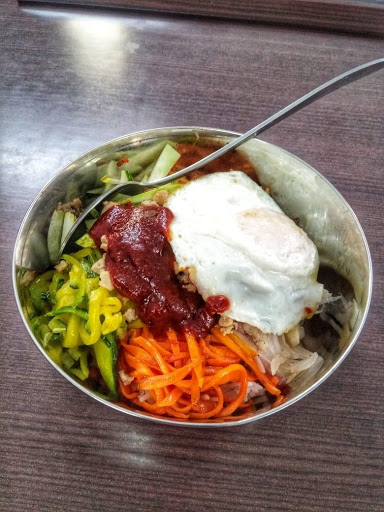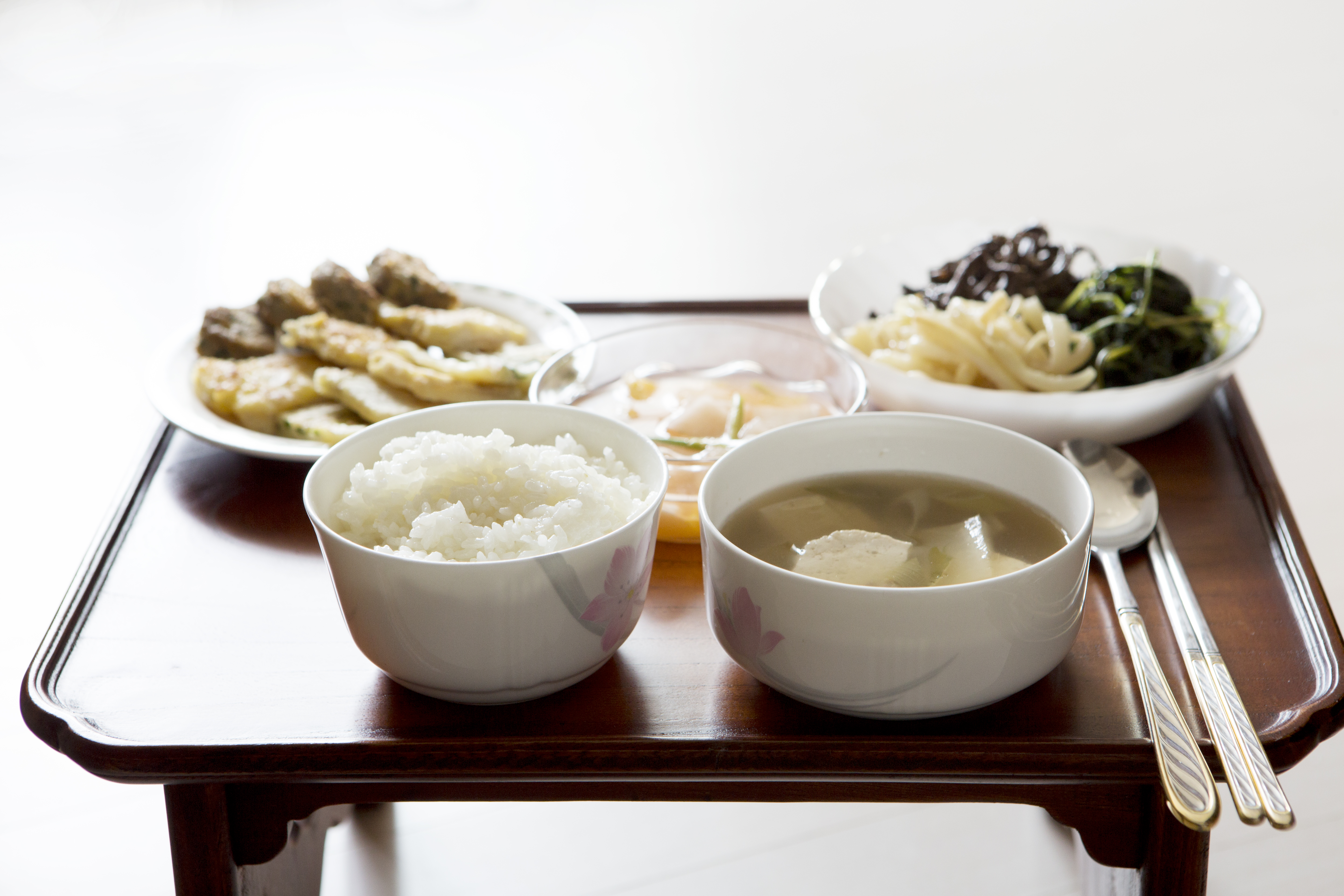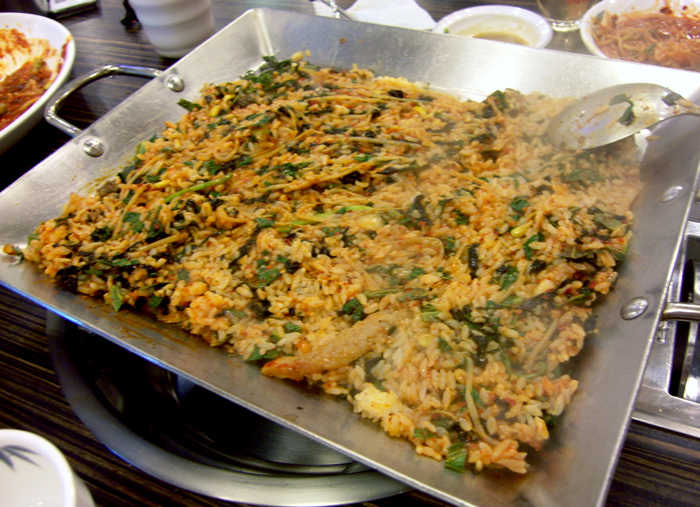|
Kongnamul
Soybean sprout is a culinary vegetable grown by sprouting soybeans. It can be grown by placing and watering the sprouted soybeans in the shade until the roots grow long. Soybean sprouts are extensively cultivated and consumed in Asian countries. History It is assumed that soybean sprouts have been eaten since the Three Kingdoms of Korea. Records of ''kongnamul'' cultivation are found in an early 13th century medical book, '' Emergency Folk Medicine Remedies'', published in Goryeo. The book states that in 935, during the foundation of Goryeo, a Taebong general, Bae Hyeon-gyeong, offered soybean sprouts to starving soldiers. Cooking methods of soybean sprout dishes are listed in '' Farm Management'', a Joseon farming and living book. Another Joseon document, '' Literary Miscellany of Seongho'', states that the poor used soybean sprouts to make ''juk'' (rice porridge). According to '' Complete Works of Cheongjanggwan'', an essay collection from the Joseon era, soybean sprout w ... [...More Info...] [...Related Items...] OR: [Wikipedia] [Google] [Baidu] |
Haejangguk
''Haejang-guk'' * () or hangover soup refers to every kind of '' guk'' or soup eaten as a hangover cure in Korean cuisine. It means "soup to chase a hangover" and is also called ''sulguk'' (). It usually consists of dried napa cabbage, vegetables and meat in a hearty beef broth. One type of haejangguk, seonjiguk, includes sliced congealed ox blood (similar to black pudding) and another type, sundaeguk, includes a kind of blood sausage made with intestine stuffed with pig's blood and other ingredients. History In the '' Nogeoldae'', a manual for learning spoken Chinese published in the late Goryeo dynasty (918–1392), the term ''seongjutang'' () appears. It means "soup to get sober" and is assumed to be the origin of ''haejangguk''. According to the record, the soup consists of thinly sliced meat, noodles, scallions, and powder of '' ''cheoncho'''' () in a broth. The composition is same as the basic recipe of a present-day ''haejangguk''. Although ''haejangguk'' is not men ... [...More Info...] [...Related Items...] OR: [Wikipedia] [Google] [Baidu] |
Gukbap
''Gukbap'' () is a Korean cuisine, Korean dish made by putting cooked rice into hot soup or boiling rice in soup. It is commonly served in a ''ttukbaegi''. Whereas soup and rice is generally eaten separately in Korea, in ''gukbap'', rice is expected to be mixed into the soup. With ''jumaks'', ''gukbap'' became popular especially in the late Joseon period. Origin The first record of ''gukbap'' in literature is in the "Journal of Royal Secretariat" (Seungjeongwon ilgi, ''Seungjeongwon Ilgi''). The journal stated that female physicians recommended the dish to Sukjong of Joseon, King Sukjong due to its heartiness. During the Joseon period, gukbaps were served in ''jumaks'', taverns for merchants. As ''jumaks'' began to develop along roadside areas, gukbap was given the name ''janggukbap'': ''gukbap'' sold in ''jangsi'' (markets). Illustrations of gukbap being served in jumaks can be seen in Gim Hongdo, Gim Hong-Do's paintings from the Joseon Dynasty. In the art piece, a barmaid i ... [...More Info...] [...Related Items...] OR: [Wikipedia] [Google] [Baidu] |
Venerupis Philippinarum
''Ruditapes philippinarum'', the Manila clam, is an edible species of saltwater clam in the family Veneridae, the Venus clams. Common names include Manila clam, Japanese littleneck clam, Japanese cockle, and Japanese carpet shell.Cohen, A.N. 2011''Venerupis philippinarum''.The Exotics Guide: Non-native Marine Species of the North American Pacific Coast. Center for Research on Aquatic Bioinvasions, Richmond, California, and San Francisco Estuary Institute, Oakland, California. Revised September 2011. In Japan, it is known as ''asari''. In Korea, it is known as ''bajirak''. The clam is commercially harvested, and is the second most important bivalve grown in aquaculture worldwide.Cordero, D., et alPopulation genetics of the Manila clam (Ruditapes philippinarum) introduced in North America and Europe.''Scientific Reports'' 7, Article number: 39745. 3 January 2017. Description The shell of ''Ruditapes philippinarum'' is elongate, oval, and sculptured with radiating ribs.Morris, R.H. ... [...More Info...] [...Related Items...] OR: [Wikipedia] [Google] [Baidu] |
Bibimbap
Bibimbap * ( ; ), sometimes Romanization of Korean, romanised as bi bim bap or bi bim bop, is a Korean rice dish. The term ''bibim'' means "mixing" and ''Bap (rice dish), bap'' is cooked rice. It is served as a bowl of warm white rice topped with ''namul'' (sautéed or blanched seasoned vegetables) and ''gochujang'' (chili pepper paste). Egg and sliced meat (usually beef) are common additions, stirred together thoroughly just before eating. In South Korea, some cities such as Jeonju, Jinju, and Tongyeong are known for their versions of bibimbap. In 2017 the dish was listed at number 40 on the ''World's 50 most delicious foods'' readers' poll compiled by CNN Travel. Etymologies ''Bibimbap'' has gone by a number of names over time. Its earliest names appear in Korean hanja texts. Its first name was ' (). This name appeared in the ''Yeokjogumun'' () portion of the book ''Historical Notes of Gijae'' (), which was written by Bak Dongnyang () around 1590. In the ''Cheongdae ilgi ... [...More Info...] [...Related Items...] OR: [Wikipedia] [Google] [Baidu] |
Korean Cuisine
Korean cuisine is the set of foods and culinary styles which are associated with Korean culture. This cuisine has evolved through centuries of social and political change. Originating from ancient Prehistoric Korea, agricultural and nomadic traditions in Korea and southern Manchuria, Korean cuisine reflects a complex interaction of the natural environment and different cultural trends. Korean cuisine is largely based on rice, vegetables, seafood and (at least in South Korea) meats. Dairy is largely absent from the traditional Korean diet. Traditional Korean meals are named for the number of side dishes () that accompany steaming, steam-cooked short-grain rice. Kimchi is served at nearly every meal. Commonly used ingredients include sesame oil, (fermented bean paste), Korean soy sauce, soy sauce, salt, garlic, ginger, (chili pepper, pepper flakes), (fermented red chili paste) and napa cabbage. Ingredients and dishes vary by province. Many regional dishes have become nat ... [...More Info...] [...Related Items...] OR: [Wikipedia] [Google] [Baidu] |
Muchim
''Namul'' () refers to either a variety of edible greens or leaves or seasoned herbal dishes made of them. Wild greens are called ''san-namul'' (), and spring vegetables are called ''bom-namul'' (). On the day of Daeboreum, the first full moon of the year, Koreans eat ''boreum-namul'' () with five-grain rice. It is believed that ''boreum namuls'' eaten in winter help one to withstand the heat of the summer to come. Preparation and serving For ''namul'' as a dish, virtually any type of vegetable, herb, or green can be used, and the ingredient includes roots, leaves, stems, seeds, sprouts, petals, and fruits. Some seaweeds and mushrooms, and even animal products such as beef tendons are also made into ''namuls''. Although in most cases the vegetables (and non-vegetable ''namul'' ingredients) are blanched before being seasoned, the method of preparation can also vary; they may be served fresh (raw), boiled, fried, sautéed, fermented, dried, or steamed. ''Namul'' can be sea ... [...More Info...] [...Related Items...] OR: [Wikipedia] [Google] [Baidu] |
Kongnamul-bulgogi
''Kongnamul-bulgogi'' (), sometimes abbreviated as ''kongbul'' (), is a modern Korean dish. It is a combination of ''bulgogi'', bean sprouts, rice cake, vegetables, noodles, sausages, and spicy sauce. The ingredients are roasted in a large pan. The dish has become increasingly popular in South Korea, especially among teenagers, due to its low price and appealing flavour. History ''Kongnamul-bulgogi'' restaurants thrived in Jeonju during the 1980s. The dish enjoyed a resurgence with the success of the Kongbul restaurant franchise, which opened in 2008. Variations The original dish is a combination of the sauce, bean sprouts, and pork. However, there are several variations to this recipe. For example, squid or chicken can be added, and the spicy sauce can be replaced by a sweet one. Additionally, rice cakes, boiled eggs, noodles, dumplings, ham, and cheese are options for any type of ''kongbul''. See also * Korean cuisine * Kimchi * Gochujang References {{Reflist Meat d ... [...More Info...] [...Related Items...] OR: [Wikipedia] [Google] [Baidu] |
Bap (food)
''Bap'' () is a Korean name for cooked rice prepared by boiling rice or other grains, such as black rice, barley, sorghum, various millets, and beans, until the water has cooked away. Special ingredients such as vegetables, seafood, and meat can also be added to create different kinds of ''bap''. In the past, except for the socially wealthy class, people used to eat mixed grain rice together with beans and barley rather than only rice. In Korea, grain food centered on rice has been the most commonly used since ancient times and has established itself as a staple food in everyday diets. In Korean, the honorific terms for ''bap'' (meal) include ''jinji'' () for an elderly person, ''sura'' () for a monarch, and ''me'' () for the deceased (in the ancestral rites). Preparation Traditionally, ''bap'' was made using ''gamasot'' (가마솥, a cast iron cauldron) for a large family; however, in modern times, an electronic rice cooker is usually used to cook rice. A regular heavy-bot ... [...More Info...] [...Related Items...] OR: [Wikipedia] [Google] [Baidu] |
Agwi-jjim
''Agwi-jjim'' * () or ''agu-jjim'' () is a Korean ''jjim'' dish made with blackmouth angler, the fish known as ''agwi'' in Korean. The name of the dish is usually translated as "braised spicy angler". The dish is seasoned with hot chili pepper powder, doenjang, ''ganjang'' (soy sauce), minced garlic, and chopped scallions to make it spicy and hot. However, other ingredients such as ''kongnamul'' (soybean sprouts), ''mideodeok'' (미더덕, ''Styela clava''), and ''minari'' (미나리, ''Oenanthe javanica'') also play an important role in giving ''agujjim'' a refreshing and fragrant flavor. The fish is an excellent source of protein and has a rich taste as well as a palatable chewy texture. History Its origins are known to be a fish market in the city of Masan, South Gyeongsang Province where local fishermen would ask cooks from the market eateries to create a tasty dish from the ugly fish. Until the 1940s, the fish was not eaten and was frequently discarded due to its ugly ... [...More Info...] [...Related Items...] OR: [Wikipedia] [Google] [Baidu] |
Jjim
''Jjim'' (; ) is a Korean cuisine term referring to dishes made by steaming or boiling meat, chicken, fish, or shellfish which have been marinated in a sauce or soup. The cooking technique originally referred to dishes cooked in a '' siru'' (시루, earthenware steamer mainly used for making '' tteok'') by steaming. However, the name ''jjim'' has now come to imply a finished dish with a steamed appearance. The cooking method for most ''jjim'' dishes nowadays has changed to boiling the ingredients in broth and reducing the liquid.''Jjim'' at Nate Encyclopedia Pressure cookers are popular for making ''jjim'' as well. Le ... [...More Info...] [...Related Items...] OR: [Wikipedia] [Google] [Baidu] |
Namul
''Namul'' () refers to either a variety of edible greens or leaves or seasoned herbal dishes made of them. Wild greens are called ''san-namul'' (), and spring vegetables are called ''bom-namul'' (). On the day of Daeboreum, the first full moon of the year, Koreans eat ''boreum-namul'' () with five-grain rice. It is believed that ''boreum namuls'' eaten in winter help one to withstand the heat of the summer to come. Preparation and serving For ''namul'' as a dish, virtually any type of vegetable, herb, or green can be used, and the ingredient includes roots, leaves, stems, seeds, sprouts, petals, and fruits. Some seaweeds and mushrooms, and even animal products such as beef tendons are also made into ''namuls''. Although in most cases the vegetables (and non-vegetable ''namul'' ingredients) are blanched before being seasoned, the method of preparation can also vary; they may be served fresh (raw), boiled, fried, sautéed, fermented, dried, or steamed. ''Namul'' can be se ... [...More Info...] [...Related Items...] OR: [Wikipedia] [Google] [Baidu] |






